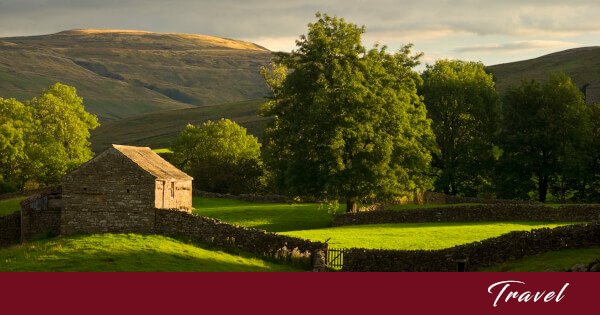What comes to mind when I say, I want to build a brick wall? I’ll bet you pictured a straight brick wall. But that’s not what I want. I want a “crinkle crankle” wall, as the British call them.
What Is It
A “crinkle crankle” wall is a brick wall with alternating curves that zigzags across the land. The use of this type of wall in England goes back centuries when innovation was often combined with practicality. These unusual types of walls showed an owner’s resourcefulness, as well as their style. (Back then, architecture could solve problems as well as be beautiful.)
Did You Know…
- Depending on where you are, curvy brick walls are also called crinkle crankle walls, crinkum crankum walls, wibbly wobbly walls, serpentine walls, wavy walls, or ribbon walls.
- “Crinkle crankle” comes from Old English and means “zigzag” or something with bends and turns. Though the term goes back centuries, it didn’t get applied to wavy walls until the seventeen hundreds.
- Crinkle crankle walls often characterize Georgian and Victorian estates, especially those with extensive gardens.
Where Are They
While crinkle crankle walls were most popular in England—especially Suffolk—they weren’t invented there. The oldest wavy wall was found in a more-than-three-thousand-year-old city in Egypt. Discovered in 2020, this ancient city had a zigzag wall around what is believed to be the government district. This wavy wall, with its single entrance, had archaeologists theorizing the type of wall had been chosen for security purposes.
Fast forward to mid-seventeenth century England, when Dutch engineers drained eastern England’s marshlands. These engineers are believed to be the builders of the first crinkle crankle walls in the U.K.
In the U.S., these wavy walls are called serpentine walls. After seeing them in England, Thomas Jefferson brought the idea back to Virginia. The best-known of these walls in the U.S. is on the University of Virginia campus which Jefferson founded in 1819.
Did You Know…
- The Dutch called these wavy walls “slangenmuur” which translates to “snake walls.”
- Suffolk has twice as many crinkle crankle walls as the rest of the U.K.
- The University of Virginia has Thomas Jefferson’s hand-written notes about the savings and benefits of building serpentine walls.
- Though the U.S. doesn’t have as many crinkle crankle walls as the U.K., the U.S. does have one of the largest. In Michigan, a portion of the Ford Motor Company’s Dearborn Development Center is surrounded by a one-mile-long wavy wall about seven feet tall and only four inches wide.
Why Build Them
There are several reasons to build wavy walls instead of straight ones. (Besides the way they look, since there’s nothing prettier. See for yourself, click here.) The practical purposes include defense; cost savings and strength; and gardening.
Defense: Wavy walls provided a strategic advantage when protecting an estate. Attacking troops had to break ranks as they reached the walls, making them vulnerable to estate defenders.
Cost Savings and Strength: Believe it or not, a wavy wall takes fewer bricks and less mortar to build than a straight wall. Though the wavy wall covers a bit more distance, only one row of bricks is needed because the wall’s curves provide stability and strength. (If you want the mathematical reasons why, click here.)
Gardening: In England’s colder climate, crinkle crankle walls were usually built from East to West so one side always faced South and caught the sun’s rays. The alcoves created by the curves not only sheltered plants from the harsh winds but created microclimates by trapping and retaining heat. These pockets created a warm environment ideal for growing fruit trees and other delicate plants, like peaches, apricots, and figs.
Did You Know…
- The curves act as a buffer by spreading stress more evenly along the wavy wall. This reduces the risk of an earthquake damaging or collapsing it.
- A crinkle crankle wall running the same linear distance as a straight wall is about 22% longer. But because it can be thinner, it uses about 25% fewer bricks, cutting material costs and construction time by up to 30%.
- In agricultural circles, crinkle crankle walls were often called “fruit walls.”
Winding Down
Sometimes, a straight line isn’t always the best. Crinkle crankle walls prove that. Yet even with all their benefits, few new walls are being built. Why? Because it requires careful planning and specialized skills—accurate math and precision are essential to making sure the curves retain their structural integrity.
Still, some community and home builders, along with architects and designers, are rediscovering the beauty, durability, and cost-effectiveness of crinkle crankle walls.
Why not soothe your soul and eyes and plan a trip to the University of Virginia or Suffolk, England to visit one of these walls? If you can’t make it that far, maybe you can find one closer to home. If not, simply search for photos of crinkle crankle or serpentine walls online and enjoy.


A straight line is not always straight, in space.
I’ll take your word for it since I have no idea. Lol